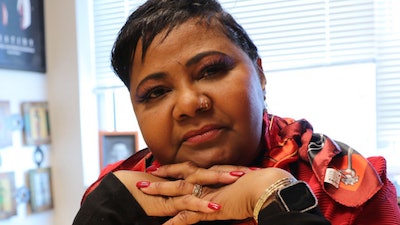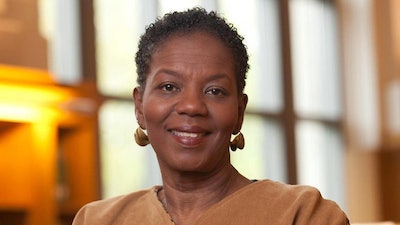As we write this paper, multicultural literature and Black History are under attack — led by Florida Gov. Ron DeSantis. Educators are being sanctioned and under threat of being fired. Nonetheless, some teachers stand steadfast in their commitment to exposing students to authentic literature about and by Black scholars — historians, authors, social activists, etc.
A great deal of attention has focused on the crucial need for high-quality multicultural literature in PreK-12 schools and academic settings. Most noticeably, Rudine Sims Bishop, a distinguished and esteemed scholar in the field of children’s literature, authored an essay titled “Mirrors, Windows, and Sliding Glass Doors” (Bishop, 1990), which made a compelling case for including diverse reading materials in classroom instruction. The essay posited that exposing students to literary works with a range of perspectives, representative of those historically marginalized and underrepresented and the diversity of the human experience – specifically across culture and ethnicity – could facilitate greater self-awareness and pride along with a deeper comprehension of the world around them.
 Dr. Donna Y. Ford
Dr. Donna Y. Ford
Her framework is an unapologetic concrete reminder that all students benefit from exposure to non-white literature and may have also contributed to the conceptual framework of decolonizing the classroom bookshelf in that the use of more diverse children’s literature supports challenging the status quo, elevating marginalized voices, and fostering a sense of belonging and identity for all children. It ensures that the stories we read with and to children, and especially those that are part of the school curriculum, are reflective of the diverse realities of our global society.
While Sims’ work has been applied in many PreK-12 pedagogical contexts, diversity reflected in the human experience is ageless — just as young student-learners benefit from multicultural literature, so can older students and adult learners in colleges and universities. Very little has been done in higher education to ensure that adult learners are afforded the opportunity to experience “mirrors, windows, and sliding glass doors” in the readings selected for university-level coursework. Problematically, for some educators in the majority white academy, the need for and benefits of multicultural literature remain elusive by choice, lack thereof, or inadequate exposure in their own PreK-12 schooling, higher education preparation, and subsequent professional development.




An examination of the literary canon, research, and readings in most higher education courses often reflects narratives from the dominant culture that has a heritage connected to colonialism and systemic racism. This dominance has resulted in the marginalization and underrepresentation of works by authors from diverse racial, ethnic, language, and cultural backgrounds. These canons show up in syllabi comprising collections of texts considered the most significant and influential in literature, and they continue the tradition of reflecting the perspectives and experiences of the dominant culture while excluding or minimizing the voices of marginalized and oppressed communities. The result is the reification of the “single story” narrative, racism, and entrenched beliefs in White superiority, Black inferiority, and anti-Blackness.
We are troubled that the literature we read in the 1970s -1990s in PreK-12 schools and colleges and universities are still required readings today. The message given to minoritized learners of all ages is that they and their culture, experiences, language, and history do not matter. The need to decolonize higher education literature is essential to prepare professionals in all disciplines to be anti-racist, equitable, and culturally competent.
Decolonization is founded on a framework that values the integration of the individual’s mental (mind), physical (body), and spiritual (spirit) aspects. This approach encourages a holistic perspective that acknowledges and respects the unique qualities of each person. The framework promotes the cultivation of admiration for the completeness of others, which fosters respect for the personhood of others. Therefore, decolonizing literature would first require a commitment to the conceptualization of decolonization followed by the intentional action to select literature that reflects the vast array of individual presentations of humanity. The process of decolonizing literature entails a thorough exploration of dominant narratives. It involves expanding the scope of readings to encompass works authored by individuals who have personally experienced the effects of oppression resulting from colonialism and institutional racism. This involves a comprehensive re-evaluation of existing literary canons; intentional efforts to diversify them will support actively challenging and dismantling colonial perspectives, power structures, and stereotypes (Mendoza & Reese, 2001; Sianturi & Hurit, 2023).
In my classes, I (Ford) rarely have required books. To increase interest and engagement in adult learners from all racial, ethnic, and cultural groups, I offer a list of relevant, class-related books from which students can choose to read and write a book review. Students can read a book not on the list by providing a rationale. I want my students to be passionate about the selected book and have the opportunity to make both personal and professional connections to their current and future work with minoritized students, clients, patients, subjects, etc. The books and readings must meet high standards for multicultural literature. In this process, we also interrogate literature in direct opposition to such rigorous culturally responsive qualifications.
The selection of readings for my (Tyson) courses includes literature from the tier-one journals in the field, along with university presses, and works from the lower tier, non-academic presses, newspapers, and community writings. This way, my students and adult learners can read about historical data and findings about a given topic, while seeing what other communities were writing about in publications that are seldom included in the “canon.” For example, as a teacher educator, I always include writings by John Dewey, an educational reformer who offered the theory that individuals grow and learn as they interact with the world. He is one of the most influential scholars in education. His most famous work is The School and Society. My students are also assigned to read W.E.B. Dubois’ work, as the first Black to receive a Ph.D. from Harvard, who wrote The Philadelphia Negro, and Booker T. Washington, a Black educator and founder of Tuskegee University who wrote The Case of the Negro. Note that the three books were published in 1899. Students are then invited to read newspapers, church bulletins, and other primary resources from the white and Black communities to get diverse and more authentic viewpoints and multiple perspectives. The inclusion of these (and other marginalized) voices decolonized the discussion about educational theory in the year 1899.
Below, we offer several recommendations that align with the spirit of and rationale for decolonization in the ivory tower.
Recommendations for decolonizing literature with intentionality
Undergirding every book and piece of literature (article, chapter, newspaper, blog, etc.) must be authenticity and accuracy. The readings must accurately and authentically reflect Black (and other minoritized groups) in terms of:
Characters – Black characters in literature are often demonized, including those designated as canons. Attention must be devoted to status and role, occupation, achievement, marital status, and family structure. How are Black characters represented? What negative stereotypes exist in the reading? How do the Black characters deal with emotions such as anger and frustration? Also important is to compare their roles and representation to the white characters.
Characteristics – Authentic illustrations help to decrease and, preferably, eliminate negative stereotypes. How are Black males and females illustrated in terms of skin tone, hair style and texture, language and vocabulary, intelligence, and body type? For example, are darker skin Black characters demonized more than lighter skin characters? Discussions of colorism are essential for literary decolonization. See Norwood’s Color Matters: Skin Tone Bias and the Myth of a Postracial America. Are Black women stereotyped with the Jezebel trope? Is Black English treated as inferior?
Terminology – The terms used to describe Black characters must not be deficit-oriented. Offensive terms must not be ignored or trivialized. Too often, ‘dark’ and ‘black’ are associated with negativity (bad, evil, wrong, illegal). Per Grewal, this “bad is black” effect may have its roots in our deep-seated human tendency to associate darkness with wickedness. Across time and cultures, villains are portrayed as more likely to be active during nighttime and to don black clothing. Similarly, heroes are often associated with daytime and lighter colors.
Visuals/illustrations – Visuals are a form of non-verbal communication. Illustrations and artifacts such as nooses, burning crosses, and white sheets must be interrogated. This is also related to color bias, noted above.
Setting – Where the story takes place speaks volumes about the author’s views of Black people. Frequently, the setting is crime ridden, drug infested, impoverished, and single family headed by a female. Most works place Blacks in urban settings; few works situate them in rural and suburban settings. Setting biases are, thus, disregarding a significant number of Blacks and their lived experiences across environments.
Context – The situation, problems, and issues must be interrogated for realism, deficit orientations, and negative stereotypes. Are the experiences negative? Positive? Both?
Relevance – The literature must be timely and related to the course’s focus and purpose. Readings need to be personally and professionally pertinent and interesting to Black students. Recall the Bishop windows and windows analogy. Do the readings fit into the fourth quadrant of Ford’s Bloom-Banks Matrix – which is rigorous and relevant?
Multicultural level – High-quality multicultural literature is one component of the educational curriculum overall. Is the literature at the lowest or highest levels of multicultural education — transformation and social action — according to Banks’ multicultural infusion model?
Rigor – To what extent do the readings promote critical thinking and problem-solving as defined in Bloom’s (1985) Taxonomy? To what degree are students taught to critique what they read?
Counterbalance – Excessive, polemic, and stereotypical focus on any recommendation listed herein promotes colonization, even if unintentional. There must always be readings and discussion that counterbalance and otherwise dismantle distortions.
Professionally and personally, we feel obligated and compelled to prepare current and future professionals to be advocates, allies, accomplices, and co-conspirators on behalf of their Black and other minority students, clients, subjects, patients, etc. This culturally based empowerment philosophy is essential in our diverse nation. To do otherwise is tantamount to miseducation and benign neglect. We want no part of either. Thus, decolonization is a necessary philosophy, objective, and practice.
Dr. Donna Y. Ford is a distinguished professor of education and human ecology in the College of Education and Human Ecology at The Ohio State University.
Dr. Cynthia A. Tyson is a professor in the College of Education and Human Ecology at The Ohio State University.
References
Bishop, R.S. (1993). Multicultural literature for children: Making informed choices. In V.J. Harris (Ed.), Teaching multicultural literature in grades K-8 (pp. 37- 54). Christopher-Gordon.
Bishop, R.S. (1990). Mirrors, windows, and sliding glass doors. In Perspectives: Choosing and using books for the classroom, 6(3), ix-xi.
Dewey, J. (1899). The school and society: Being three lectures. University of Chicago Press.
DuBois, W. E. B. (1899). The Philadelphia negro: A social study (No. 14). Published for the University.
Ford, D.Y., Tyson, C.A., Howard, T.C., & Harris III, J.J. (2000). Multicultural literature and gifted Black students: Promoting self-understanding, awareness, and pride. Roeper Review, 22(4), 235-240.
Gunn, A. A., & Susan, V. B. (Eds.). (2023). Teaching Multicultural Children’s Literature in a Diverse Society: From a Historical Perspective to Instructional Practice. Taylor & Francis.
Keifer, B. & Tyson, C. (2022) Charlotte Huck’s children’s literature: A brief guide. Columbus: McGraw-Hill College.
Mendoza, J., & Reese, D. (2001). Examining multicultural picture books for the early childhood classroom: Possibilities and pitfalls. Early Childhood Research & Practice, 3(2).
Park, S. C. & Tyson, C. (2010). Using multicultural literature in teaching for social justice. In E. Heilman (Ed.). Social Studies and Diversity Teacher Education: What We Do and Why We Do It. Routledge.
Sianturi, M., & Hurit, A. A. (2023). ‘I want to read this book again!’ Decolonizing children’s literature to support indigenous children in reading and mathematics learning. Journal of Intercultural Studies, 1-25.
Tyson, C. (2002) Get up offa that thing: African American middle school students respond to literature to develop a framework for understanding social action. Theory in Social Studies Education, 30(1), 42-65.
Washington, B. T. (1899). The case of the Negro. Atlantic Monthly Press.
This post was originally published on this site be sure to check out more of their content.







